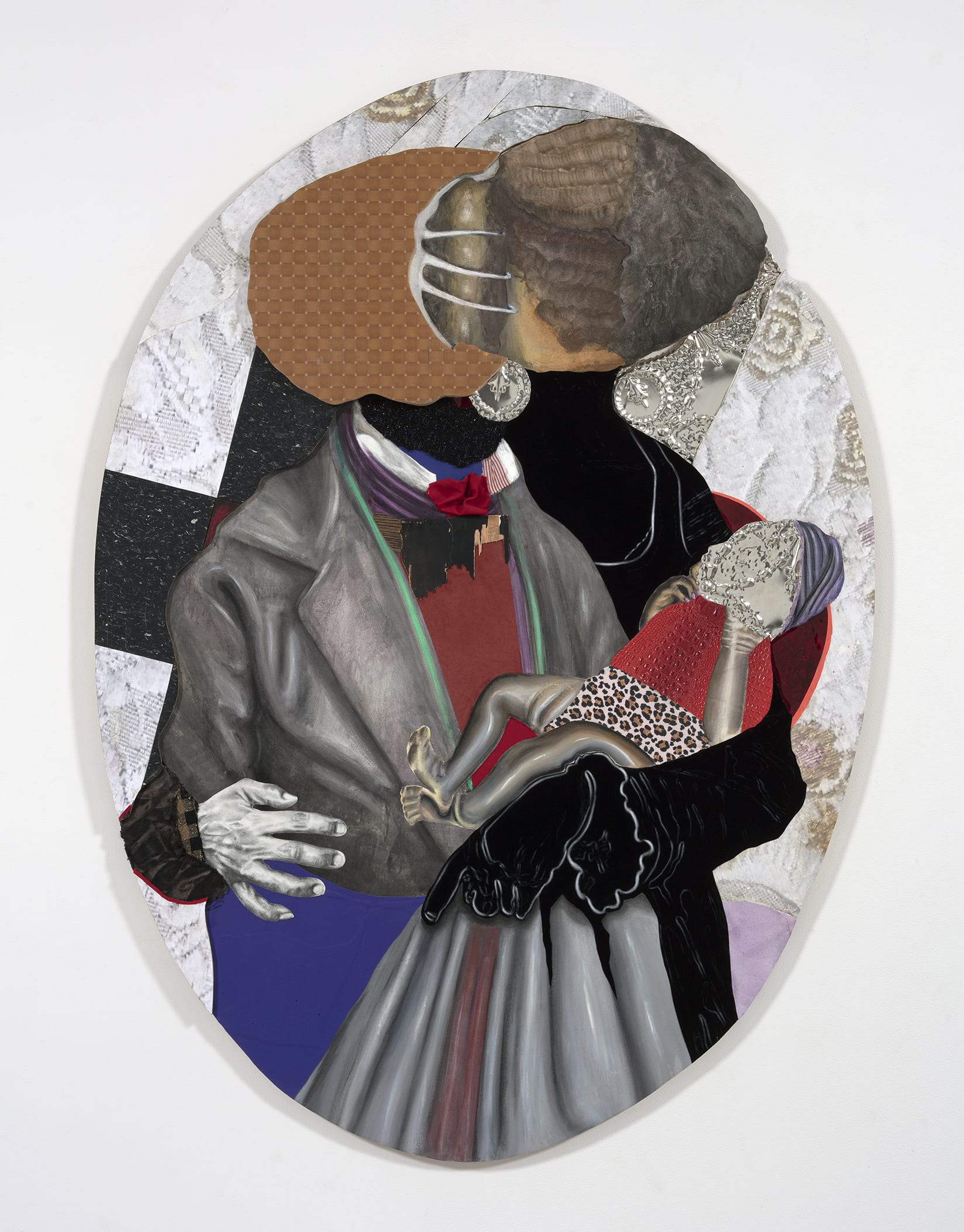David Shrobe Repurposes Detritus to Reimagine History
Emma Grayson | August 21, 2020

Embodying the heart of Harlem is New York-based artist, David Shrobe. Not only capturing his artistry using unique materials – think old fabrics versus acrylic paint, or household goods versus traditional epoxy resin – Shrobe houses his work within upcycled frames, which inspire him nearly as much as the idea behind the work itself. The frame becomes an integral part of the overall work, making the viewing experience even more arresting in person. Read on to hear how he sources these materials, how living and working in Harlem influences his work, and what a day in the studio might look like. Be sure to check out his current show HERE at Steve Turner Gallery in LA for more of his work!
Tell us about yourself? Where are you from and when did art first enter your life?
I was born, and grew up in New York City. The arts in one form or another have pretty much always been a part of my life, being raised in an apartment where my father, a jazz pianist, held jam sessions in our living room and my mother, who is a classically trained singer, often sang throughout our home. I kept a sketch book and loved to draw since around age 12, and was soon after thrown down, as graffiti writers would say, with my first graffiti crew where most of my friends were old school writers and club kids, which had a major influence on the art I made for many years. Painting later became my main concentration and I decided to pursue my formal training at Hunter College where I earned my BFA and MFA in Painting.
What historical movements have influenced your art the most?
Some of the historical movements that have, and continue to, inform my work are movements of resistance, rebellion, and revolution; to name a few, the Haitian Revolution, the US antislavery and civil rights movements. I’m particularly drawn to uncharted historical moments. Portraiture in classical painting, engravings and etchings especially 15th through 18th century, and early photography are also influences, such as Daguerrean portrait photography by early African American photographers, which was a movement in its own right. The current uprising for justice and equality, calling for the end of systemic racism and police brutality against black people has been extremely influential in my recent body of work currently on view.

